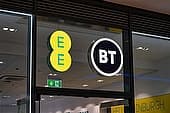Home > Broadband > News > Homes could provide power for future fibre network
Homes could provide power for future fibre network
THE broadband networks of the future could draw the power they need to operate from our homes, according to an industry body.

That's part of what the Broadband Forum are calling a "radically new" way of providing fibre to the distribution point (FTTdp), such as that being trialled by BT in Cambridgeshire.
Specifications outlined in Technical Report 301 (TR-301) describe a new kind of node for use at the distribution point, drawing attention to "the ability for it to be reverse power fed from the customer premises".
But there are numerous issues with the idea of drawing power from connected homes, not least that users would see their electricity bills go up.
How it works now
While the telephone and broadband networks obviously require some power to function, it's not really been much of an issue before.
Telephone lines are independently powered from the rest of the electricity grid - which is why old home phones (the sort that didn't need to be plugged in to the mains) would continue to work during a power cut.
They need very little energy to do this - the UK phone network uses 50 to 60 volts, compared with the 240V coursing through standard power lines and the rest of our household wiring.
Standard broadband, delivered over the copper wire network, doesn't need any extra power. Even fibre broadband is what's known as "passive", not requiring much more energy to keep the information flowing.
But the distribution points involved in FTTdp - also known as remote nodes - require far more power to supply those faster speeds.
Where the power comes from
There are three possible methods for getting that power.
Providers could use more forward power from the exchange, or they could directly connect the distribution points to the national grid. Both of these methods are being used by BT in their G.fast trials.
But while they might be willing to swallow the cost and bother when it comes to a trial, expanding the technology more widely will inevitably involve further costs, and the possibility of long negotiations with electricity suppliers.
So the third method - being able to bypass all that hassle and suck the power they need from the houses connected to the nodes - is undoubtedly appealing.
And who sells the fastest broadband?
Getting superfast broadband to all
More about the BT network here
The Broadband Forum say the specification will enable providers to offer "much higher value services without the cost and disruption to their customers".
They say FTTdp avoids the need to install new infrastructure, reduces the time required to get customers online - and will enable more people to self install, further cutting time and costs.
In return, providers using their new specification will be able to offer "much higher value services", at a greater take-up rate - and with reduced operating expenses as a result of the reverse power feed.
Most of us understand that there will be costs involved in getting faster, more reliable broadband across the whole of the UK, but how many of us would be willing to foot the electricity bill for a utility provider?
Borrowing from the neighbours
Take, for example, the village of Ulshaw in North Yorkshire.
About this time last year, BT were planning to run a very small trial of FTTdp broadband to the 16 houses in the village, as part of their contract to connect homes under the Superfast North Yorkshire project.
But it had to be delayed because, as was reported to the County Council:
"The key issue is the cost of power. The trial at Ulshaw uses a 1:1 power supply to a node that serves 16 premises. This is the same power supply that would serve a cabinet with 200 premises or more."
How much could each one of those 16 homes expect to see their electricity bills rise if they were each providing an equal slice of the power required for their FTTdp service?
Never mind that the cost of providing exactly the same amount of power to the node could vary greatly from house to house, depending on which company each home buys their domestic energy from.
As we've reported numerous times before, far too many of us are already paying more for our energy than we should or could be - and we're all paying far more than we once were despite using far less energy.
But that's not the end of the problem: what if connected houses aren't all providing an equal chunk of the power needed? How would telecoms providers ensure that it wouldn't just be one house supplying the distribution point?
It might benefit the community, but there's a world of difference between paying rates and taxes, and paying to power equipment owned by a commercial company and being used by our neighbours.
There's also the issue of what happens when the power supply is interrupted. A blackout in one building connected to the node could take out, or at least significantly affect, services for everyone else.
Capacity crunch
None of this even touches on another issue that could be facing us in the near future.
We reported in May how, despite the relatively small amounts of power needed at present, there were serious concerns about how much energy the internet - and the Internet of Things - will require in the near future.
Even before taking into account the increased power requirements of FTTdp, the Petabit Energy Aware Capacity Enhancement project say that within 20 years the fibre broadband network will need the equivalent of the UK's entire current power supply.
And before that happens, there are worries that the network is already approaching data capacity - and further price rises to cover the cost of laying yet more cables and their energy requirements.
Ulshaw was connected in February, and residents seem happy with the service they're receiving - but the issue of how to power further FTTdp deployments remains.
Get insider tips and the latest offers in our newsletter

We are independent of all of the products and services we compare.

We order our comparison tables by price or feature and never by referral revenue.

We donate at least 5% of our profits to charity, and we aim to be climate positive.
Latest News

5 December 2024
Average UK broadband speed jumps to 223Mbps
4 December 2024
Sky Stream relaunches with Essential and Ultimate options
3 December 2024
BT/EE TV gets Paramount+ streaming appGet insider tips and the latest offers in our newsletter


